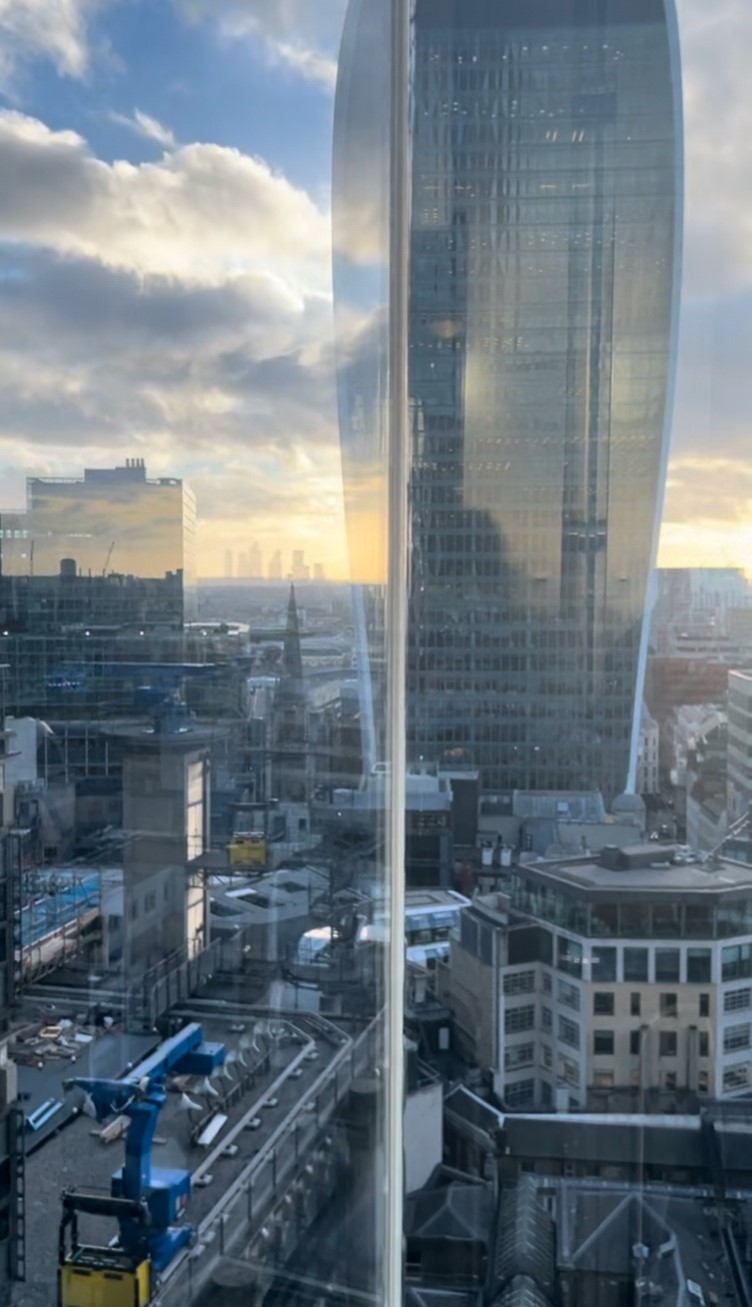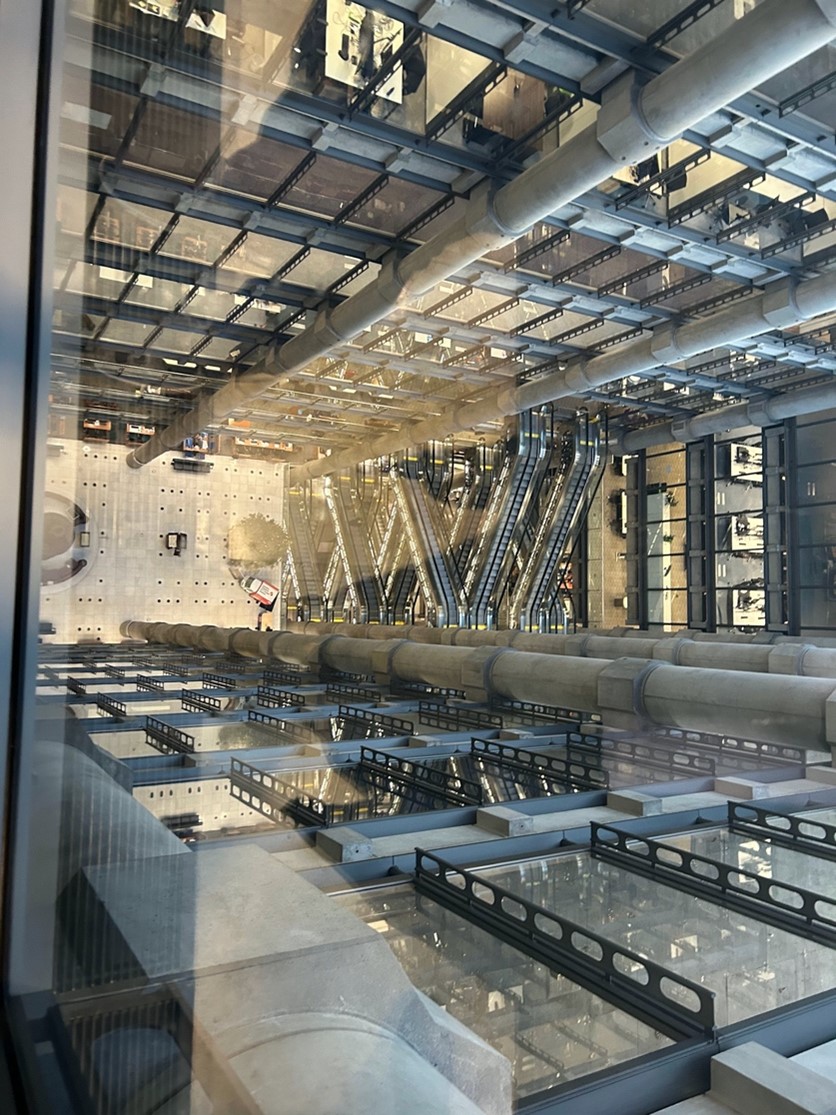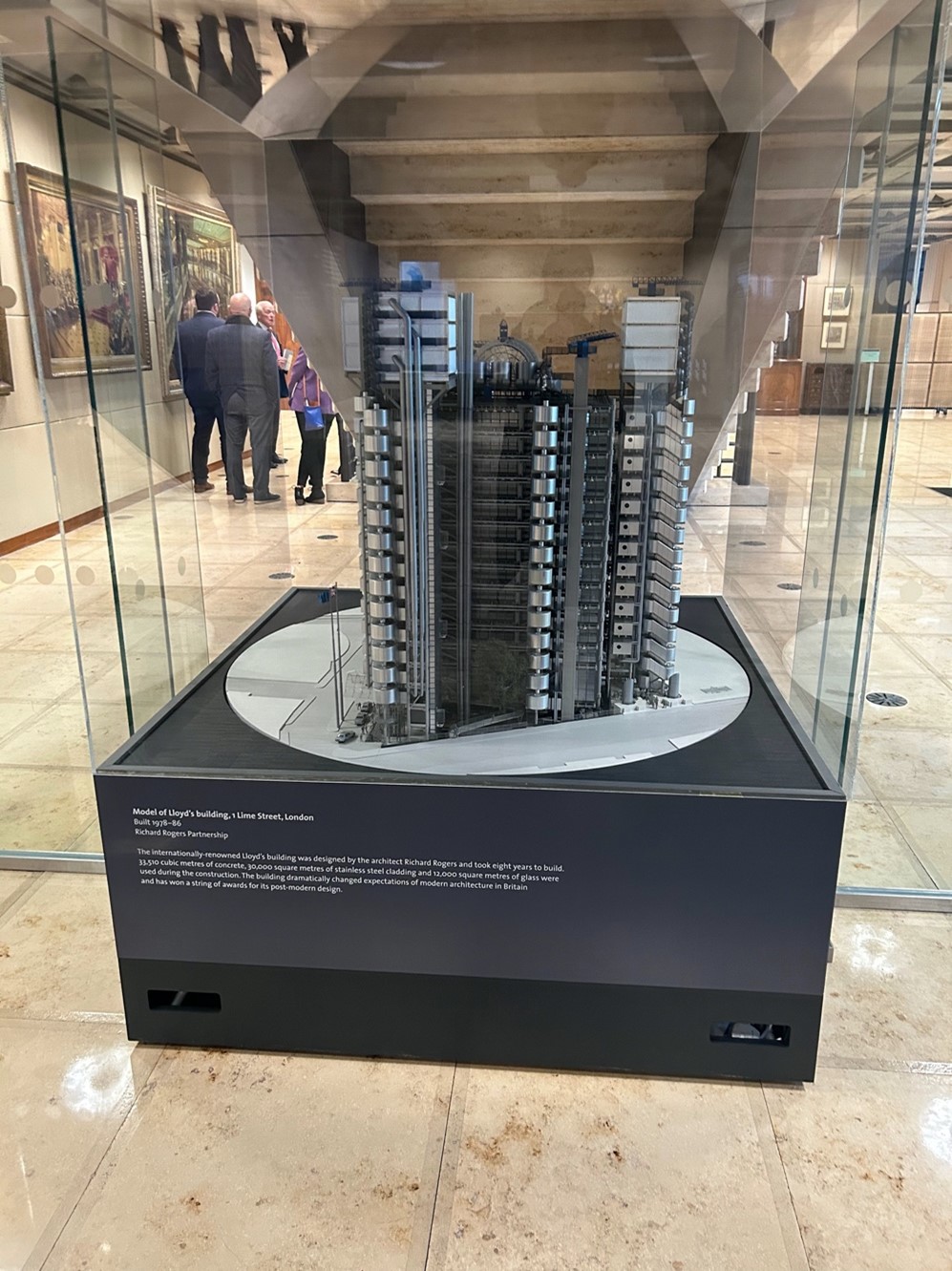Lloyds of London is a building where insurance and reinsurance business takes place. The Lloyd’s building, also known as the ‘Inside-Out Building’, is located on the former site of East India House on Lime Street. Lloyds resides in the heart of London’s main financial district.
This building’s design is unlike any other, as Llyod’s is an example of Bowellism architecture. For those of us who don’t know what Bowellism is, it’s a modern architectural style associated with Richard Rogers, who was the former member of the House of Lords in the United Kingdom. In simple terms you would say this building is basically modern art. Located on the left you can see a photo of a model of Lloyd’s building.
On Lloyd’s 25th birthday they received a Grade 1 listing. “If a building is listed as Grade 1, this is because the site is of exceptional national, architectural, or historical importance. It is rare to find a Grade 1 listed building compared to a Grade 2 listed site, simply because of the significance that is placed on such sites,” (Concrete Renovations, 2019). Llyod’s was granted this status in 2011 making it the youngest structure at the time to obtain this standing. It’s easy to see how this building has made such a large impact on London.

A view outside Lloyd’s of London.
Llyod’s of London is just as interesting on the inside as the outside. Lloyd’s is considered to be the world’s leading insurance and reinsurance marketplace. Lloyd’s of London insures a number of things, places, and people. They have tailor made policies for every type of thing you can imagine. If you are rockstar with an amazing voice, Lloyds will insure it. Along with various businesses from start-ups to multinational corporations. “And they rely on the specialism, strength and security of the Lloyd’s market to help them protect what matters most,” (Lloyd’s). If it’s special, it’s insured by Lloyds.
To think this business came to life from one humble man, Edward Lloyd. Edward stumbled upon London in 1680. Edward was 32 years old at the time, married to his wife Abigail, and had a newborn baby, Mary.
During this time London was only concerned with two things: ships and money. So, Edward opened his own Coffee House in Tower Steet. During this time there was more than 80 coffee shops, each one having its own special interest for different entrepreneurs and merchants. Edward’s coffee house focused on shipping information since this was popular with ship owners. As a businessman, he began renting out boxes (another word for tables) where businessmen would sell insurance to ship owners. Lloyds would be providing protection to these owners if their ships didn’t return from sea. To think the idea of Lloyds started with one man in a simple coffee shop. From a small coffee shop to an inside out building, the same business is done today. Brokers and underwrites sit at the same type of boxes insuring anything from a ship to outer space.

An interior view of Lloyd’s of London’s architecture.
Lloyds has a rich history insuring ship owners. During our time at Lloyd’s, we learned that nearly every ship is insured by them. Even one of the most famous ships of all time was insured through Lloyds, the Titanic. As we all know the story of the Titanic, this ship was destroyed meaning that Lloyds was responsible for paying these damages.
When significant events like these occur, Llyod’s has a very interesting process. When news like this is heard throughout the building, they ring a large gold bell. This bell alerts everyone in the building of a significant loss. They also have a loss book where they record every loss at sea that they have insured. The story of the Titanic has strong ties to Lloyds, as the ship was insured for over £1m. Even though it was a tragic day, insurers paid out the claim in full within 30 days. The Titanic is considered to be one of Lloyds biggest losses among a few others. Other losses include the HMS Lutine in 1799, the 1906 San Francisco Earthquake, 9/11, Hurricane Katrina, and the earthquake and tsunami of 2011 in Japan.
It’s easy to see that Lloyds has a rich story filled with tragedy. During our time at Lloyds, the speaker mentioned Lloyds is simply a building not a business. It’s a building where business takes place. Lloyds of London may just be considered a building, yet it’s so much more than that.
References
What are the differences between grade I and II listed buildings? Concrete Renovations. (2019, October 28). Retrieved from https://www.concreterenovations.co.uk/news/what-are-the-differences-between-grade-i-and-ii-listed-buildings/
What we insure – Lloyd’s. Retrieved from https://www.lloyds.com/about-lloyds/our-market/what-we-insure

